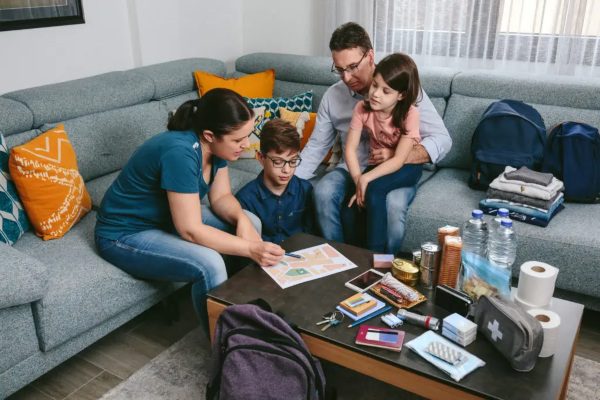It’s important to have a first aid kit handy in case of a medical emergency. Some kits are universally designed, while others cater to specific activities, such as hiking, camping, or boating. You can purchase a premade kit from a drugstore or assemble your own supplies based on your family’s needs. If you’re building your first-ever first aid kit, follow these tips to ensure you’re prepared to handle basic emergencies.
What Every First Aid Kit Needs
First aid kits come in many shapes and sizes. Whether you buy a kit or put one together yourself, the Red Cross recommends including the following supplies for a family of four:
- 2 absorbent compress dressings (5 x 9 inches)
- 25 adhesive bandages (assorted sizes)
- 1 adhesive cloth tape (10 yards x 1 inch)
- 5 antibiotic ointment packets
- 5 antiseptic wipe packets
- 2 packets of aspirin
- 1 emergency blanket
- 1 breathing barrier device for CPR (with one-way valve)
- 1 instant cold compress
- 2 pairs of latex-free medical gloves
- 2 hydrocortisone ointment packets
- 1 gauze roll bandage (3 inches wide)
- 1 roller bandage (4 inches wide)
- 5 sterile gauze pads (3 x 3 inches)
- 5 sterile gauze pads (4 x 4 inches)
- 2 triangular bandages
- Oral thermometer
- Tweezers
Personalize Your First Aid Kit
Once you have constructed a basic first aid kit, supplement it with items that apply to you or your family. Here are some ideas:
- If any family member has severe allergies, pack antihistamine medicine and/or an epinephrine injector.
- For elderly family members with delicate skin, include a roll of paper tape designed for sensitive skin.
- For diabetes patients, include a juice box, glucose tablets and gels, and an emergency glucagon injection kit.
- For anyone with coronary artery disease, pack chewable baby aspirin.
- Include emergency phone numbers on a slip of paper.
- Include instructions to help care for anyone with allergies or another medical condition.
Where to Store Your First Aid Kit
Your kit should be easily accessible and portable. You can use something as simple as a zip-top plastic bag for small kits. A tackle box or small backpack is ideal for a family of four. Some practical places to store your first aid kit include:
- In a bathroom or kitchen cabinet
- In the storage console of your car
- With your hiking, camping, or boating gear
- In your garage or workshop
While it’s always good to be prepared, sometimes a first aid kit isn’t enough. If you’re experiencing a non-life-threatening injury or illness, come to Total Point Urgent Care for the medical treatment you need. Our walk-in clinic provides care to all, no appointments or referrals necessary. We treat asthma attacks, bug bites, minor burns, ear infections, sprains and strains, strep throat, pink eye, and more. For immediate, cost-effective care, please visit one of our nine locations in Texas today.





